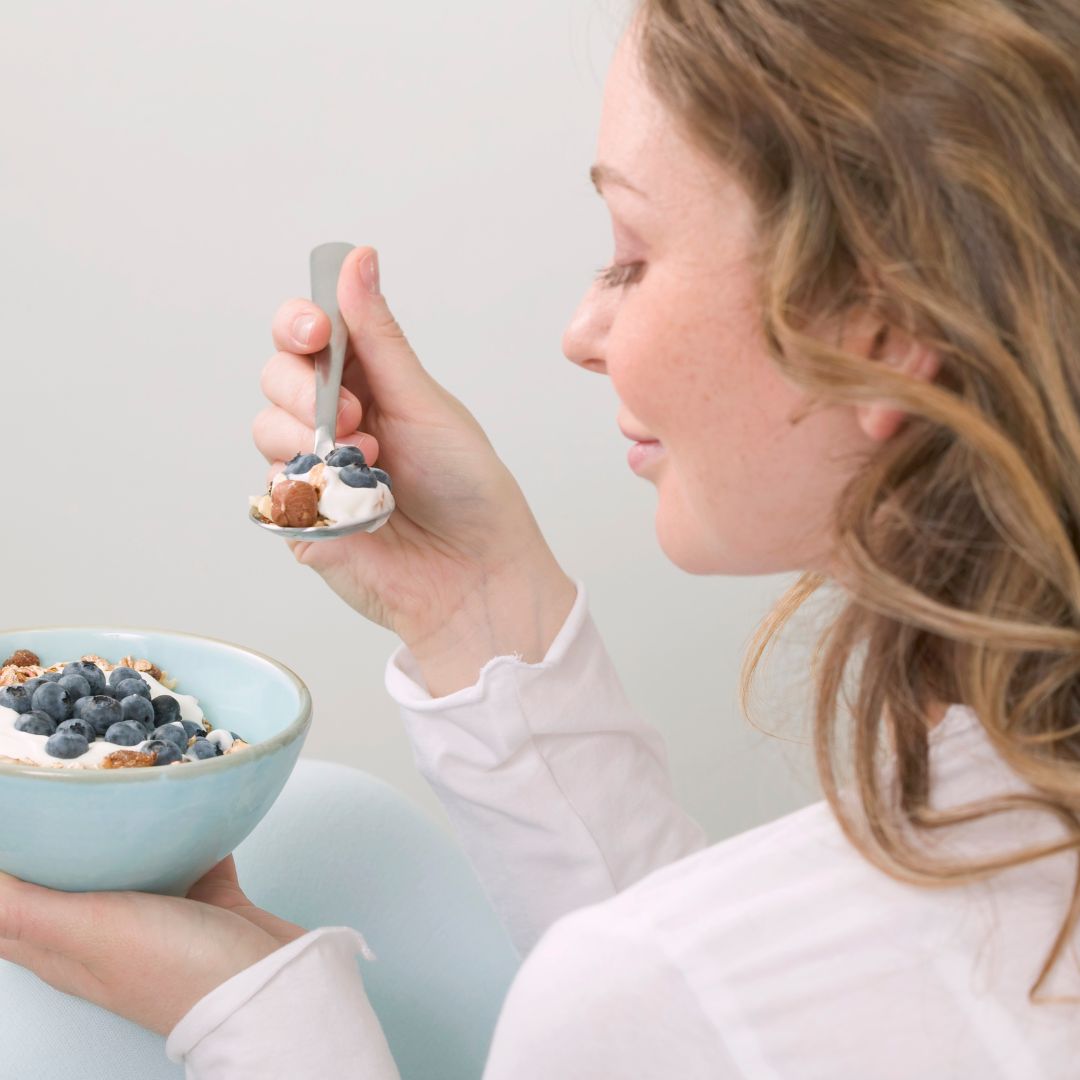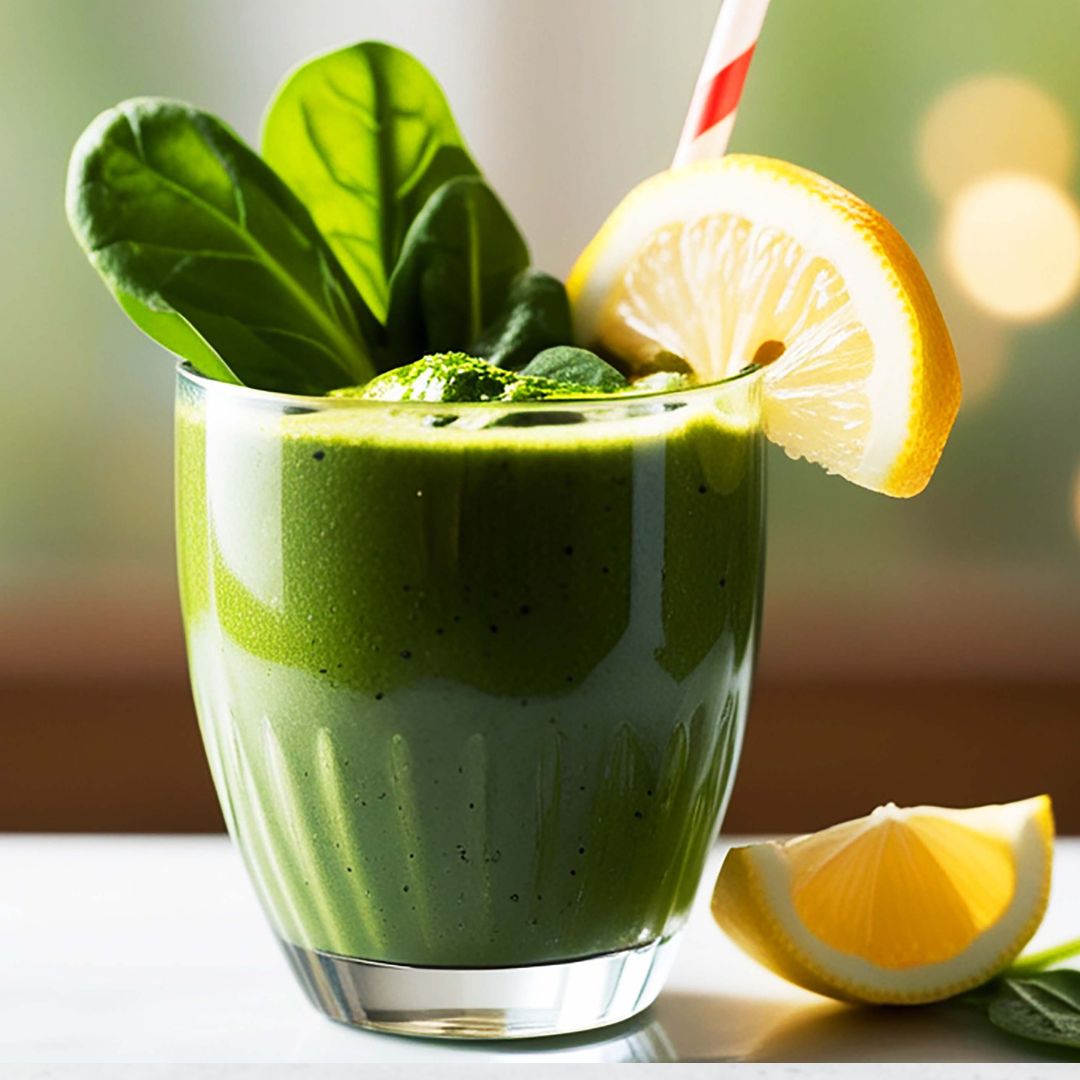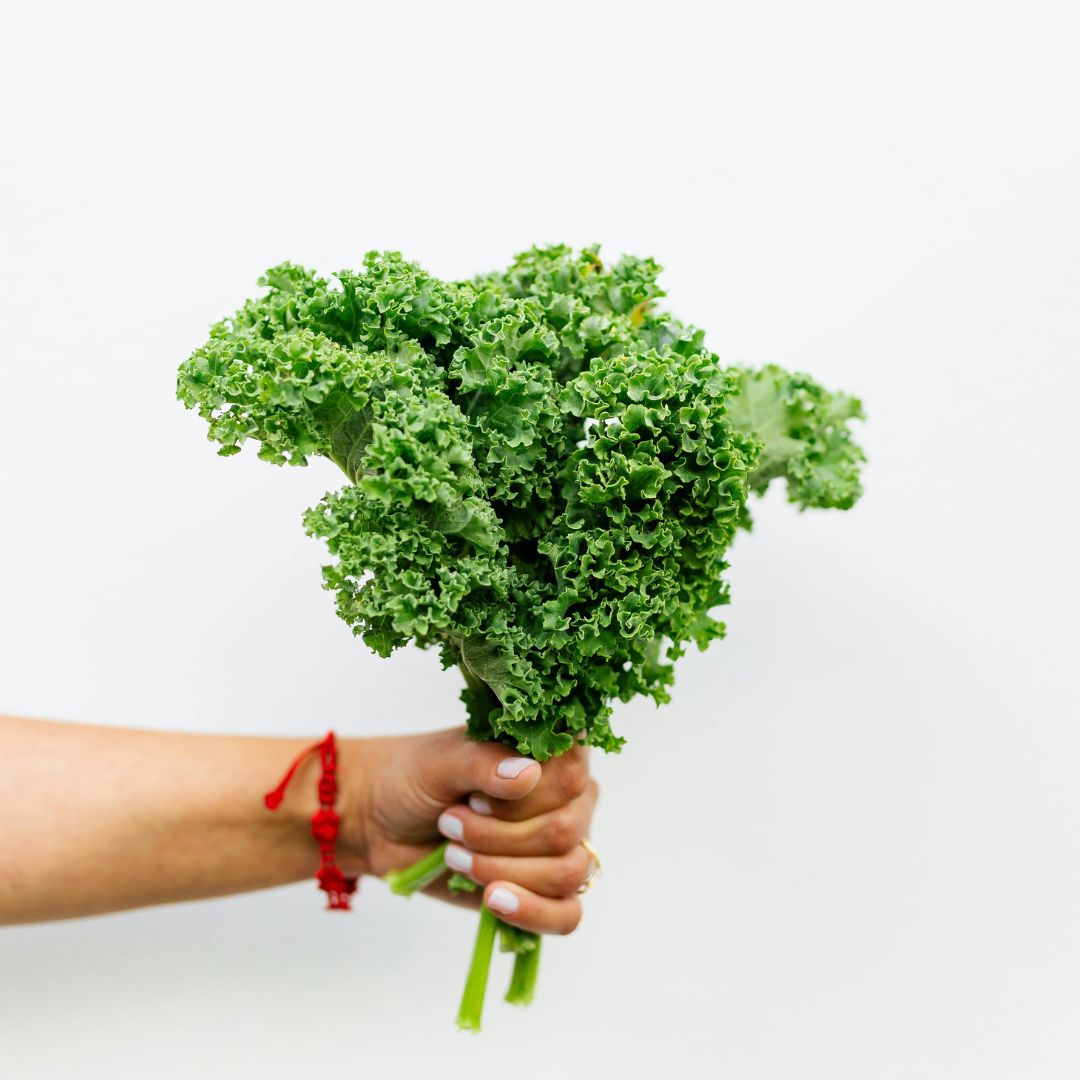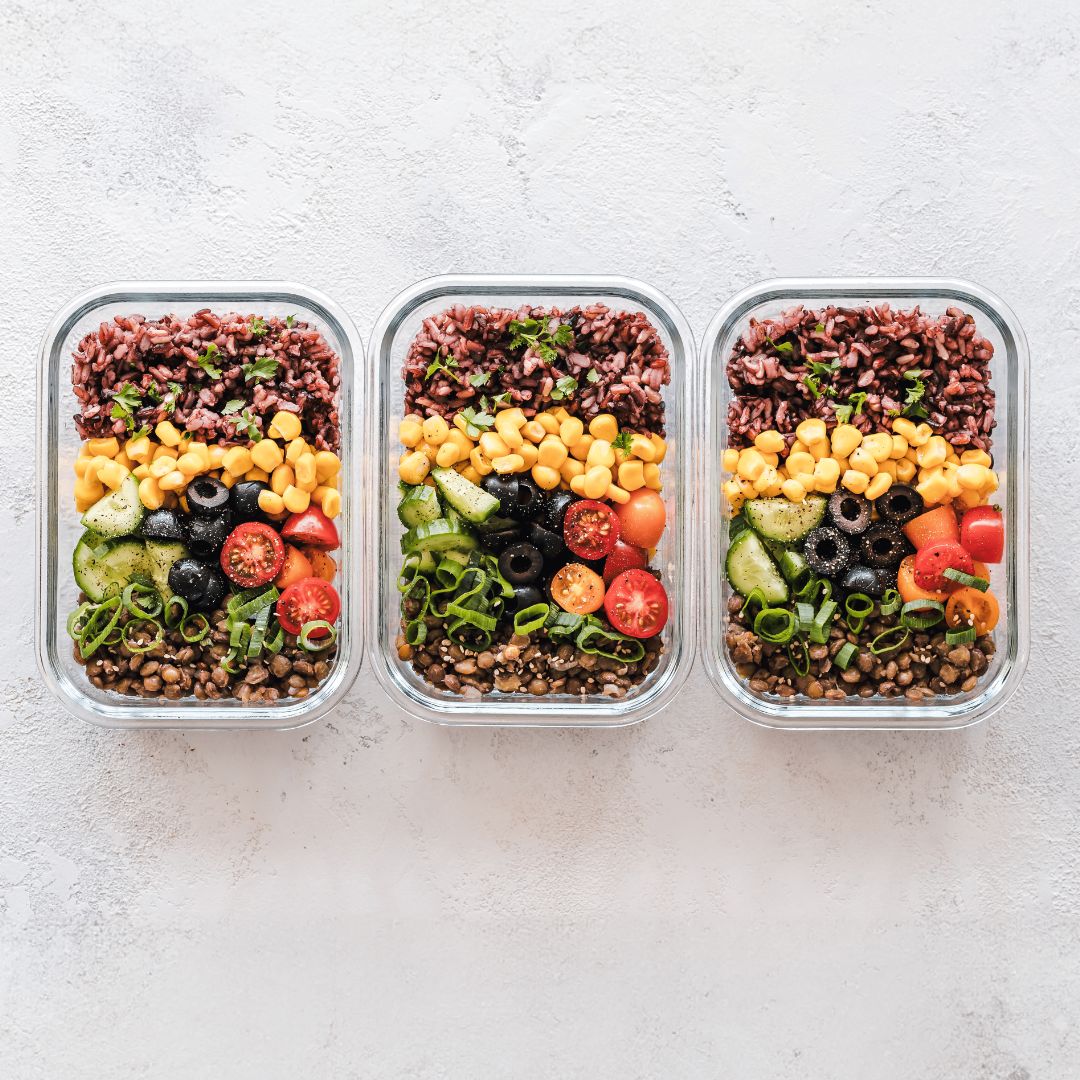
Top Tips 5 Easy Food Swaps for January
January often brings so much pressure to overhaul everything at all once. Many of us feel pulled towards strict plans or quick fixes, especially after a busy – and heavy! - December. But the problem is that those restrictive diets rarely last long, and then often leave us feeling hungry, tired and frustrated.
Gentle food swaps offer a different way forward. They are easy changes that can support better energy, steadier appetite, and a more nourishing routine without cutting out entire food groups. These small changes can help you feel nourished rather than deprived - and they are easy to keep up for the long term.
(Internal link cue: December “Avoiding the December Slump” blog)
Why Gentle Swaps Work Better than Diets
Research shows that nutrition habits that last tend to come from gradual changes rather than all-or-nothing rules. When you focus on adding nourishing foods rather than removing everything you enjoy, your meals feel satisfying and your blood sugar and energy levels often benefit.
Gentle swaps support your metabolism by increasing the amount of fibre, protein or healthy fats in your meals. These nutrients help with satiety, stabilise blood sugar and support digestive health. Over time these small choices add up and create a meaningful shift in how you feel day to day.
They also reduce the sense of pressure that often leads to diet fatigue. By making manageable changes at your own pace, it becomes easier to build confidence and consistency.
5 Practical Food Swaps for Everyday Meals
These swaps are simple, realistic and easy to put into action.
1. Swap toast for a protein-based option such as oatcakes with cottage cheese or eggs with vegetables
This reduces reliance on fast-releasing carbohydrates and increases protein and fibre which help keep blood sugar steadier. Oatcakes, cottage cheese and eggs all offer slow and sustained energy while still feeling satisfying and comforting.
2. Swap sugary breakfast cereals for a protein rich start
Many cereals create a quick rise in blood sugar followed by a mid-morning slump. Choosing Greek yoghurt with nuts and seeds, eggs, if tolerated, or a warm porridge with added protein can keep you energised and satisfied.
3. Swap creamy sauces for yoghurt based or olive oil dressings
Plain yoghurt, tahini and olive oil provide a creamy texture with more protein or healthy fats and usually less added sugar. These options help support balanced meals and provide a gentler release of energy.
4. Swap crisps or biscuits for balanced snacks
If you need a snack, choose options that pair protein and fibre. Examples include hummus with vegetables, nuts with fruit, or Greek yoghurt with berries. These combinations support fullness and reduce cravings without feeling restrictive.
5. Swap processed meats for lean or plant-based proteins
Choosing fish, poultry, tofu, tempeh or beans if tolerated can provide higher quality protein and more fibre or omega 3 fats. These foods support metabolic health and promote a steadier release of energy throughout the day.
Breakfast Upgrade Ideas
If your breakfast is an area that you’d like to refresh, try one of the following:
• Power porridge with chia and flaxseeds, and protein powder
• Greek yoghurt with berries, nuts and seeds
• A vegetable packed omelette or tofu scramble
• Oatcakes topped with nut butter and sliced fruit
Each of these options supports more balanced blood sugar responses which can help reduce mid-morning cravings.
If you want support creating realistic habits that feel good and last beyond January, why not book a free call to see how nutritional therapy could help you feel more energised and confident with your eating.

Why Detox Diets Don’t Work – and What to Do Instead
The Myth of Detoxing
The idea of “detoxing” - that we can flush out toxins from our bodies through specific diets or cleanses - is everywhere in popular health culture. Juice cleanses, lemon-detox diets, smoothie-only plans, herbal-supplement regimes, they all promise quick results: clearer skin, more energy, weight-loss, better digestion. But the evidence doesn’t back up those promises.
In reality, our bodies are built to take care of detoxification on their own. Organs such as the liver, kidneys, gut and skin work constantly to process and eliminate waste and potentially harmful substances.
A review from nutrition experts concluded there is no compelling scientific evidence supporting the use of “detox” diets for weight management or toxin elimination. Even organisations that examine popular cleanses note that detox diets often rely on exaggerated claims rather than solid data.
Why Restrictive Diets Backfire
Detox programmes often involve severe calorie restriction, liquid-only intake, exclusion of whole food groups, or reliance on special supplements and laxatives. While these approaches might lead to quick weight loss or feelings of “lightness”, they tend to bring more downsides than long-term benefits.
Some detox diets can even suppress metabolism. They may lack sufficient protein and essential nutrients, which are crucial for supporting the body’s natural detoxification system.
Even when a cleanse leads to short-term improvements, perhaps reduced bloating, lighter digestion or a sense of clarity, these are often because of the drastic reduction in processed foods, sugar, alcohol or overeating, and increased intake of fluids or veggies. Once normal eating resumes, weight tends to return and previous dietary habits creep back in.
Plus, there can also be risks. Detox supplements have been implicated in adverse effects, including liver issues, nutrient imbalance or digestive upset, particularly when combined with other restrictive practices or laxatives.
What Science Says About “Cleanses”
The scientific literature on commercial detox diets is thin. A 2015 review found only a handful of studies examining detox diets, and while a few reported enhanced “elimination” of certain persistent pollutants, those studies were small, poorly controlled or methodologically flawed.
Many reviews and expert summaries conclude that detox diets are largely unnecessary. In other words: there is currently no good-quality evidence that a detox or cleanse leads to long-term improvements in health, toxin elimination, metabolic resilience, or weight management. Indeed, what is often called “detox” is simply short-term calorie restriction or avoidance of processed foods, alcohol or high-sugar intake.
Gentle, Sustainable Alternatives
Rather than turning to “detox diets,” a more sustainable and evidence-based approach is to support your body’s natural detoxification capacity through balanced, nutrient-dense eating and healthy lifestyle habits.
How to Support Natural Detox Pathways
Your liver, kidneys, lungs, skin and digestion are all involved in detoxification. You can support them by:
Over time, these small, sustainable habits build up, supporting metabolic resilience, energy, digestion, mood and overall wellbeing.
Why This Matters - Especially If You’ve Felt Like a “Failure” After a Detox
If you’ve tried a detox diet and found it stressful, unsustainable or disappointing, you are not alone, and it is not a failure. Detox diets often set unrealistic expectations. They can make you feel good for a short while but rarely lead to lasting change.
Shifting the focus towards balanced nutrition, gradual habit change, and supporting your body’s natural systems is kinder, gentler and ultimately more effective. As a nutritional therapist working from a functional medicine perspective, I want to help you build metabolic resilience and sustainable eating, not quick-fix cleanses that fade with time.
It’s about learning to trust your body, nourishing it properly, and creating habits you can keep long-term.
If you like, you can start small: maybe add one extra portion of vegetables per day, drink a bit more water, swap a refined snack for a whole-food one. Over weeks and months, the cumulative effect of those tiny changes can be profound.
And if you’d like a little kickstart this January, you can come and join us on the Sugar Free Challenge – a wholefoods approach to getting healthier and more energised for 2026.

Top Tips: How to Avoid the December Slump
December brings celebration, connection and indulgence - but many of my clients say although it’s fun, it can leave them feeling drained, bloated, and mentally flat. The combination of darker days, disrupted routines, and more processed foods can really take a toll on both body and mind.
If you often find yourself run down by the end of the year, the problem may not be a lack of willpower but the natural stress your body faces in winter. Let’s explore why energy and mood tend to dip during the festive season, and how you can support your resilience through food, lifestyle and mindset.
Why Energy Dips in December
A perfect storm of factors contributes to the “December slump”: shorter daylight hours, higher sugar intake, more alcohol, disrupted sleep, and less movement. Each of these impacts your energy systems, metabolism, gut health and mood in subtle but significant ways.
1. Reduced daylight and lower vitamin D
In the UK, sunlight in winter is too weak for reliable vitamin D production. Low vitamin D status is associated with fatigue, poor immune function and low mood. Shorter days can also reduce exposure to natural light, affecting melatonin and serotonin — two hormones that regulate sleep, energy, and emotional stability.
2. Blood sugar fluctuations
Festive foods are often rich in simple carbohydrates and sugars, which cause rapid spikes and crashes in blood glucose. When blood sugar drops, energy and concentration follow.
This also drives hunger, cravings and irritability, pushing you toward another quick energy hit. Over time, these swings can contribute to fatigue, poor focus, and even increased inflammation.
3. Disrupted gut health
Heavier foods, lower fibre intake and reduced microbial diversity can all weaken digestion. Gut bacteria play a vital role in producing vitamins, supporting immunity and influencing the gut–brain axis, the communication network between your gut and nervous system. When digestion slows or becomes unbalanced, it can affect not only physical comfort but also energy and mood regulation.
4. More alcohol and late nights
Alcohol intake often increases during December, and while social drinking may feel relaxing, it can significantly affect sleep quality, blood sugar balance, liver function and mood. Even moderate amounts of alcohol can suppress restorative REM sleep, increase dehydration, and strain the gut barrier - all of which contribute to low energy and irritability the next day.
5. Heightened stress and less restorative rest
December tends to bring a busier social calendar and higher stress, whether from deadlines, family dynamics or financial pressure. Chronic stress increases cortisol, which can disturb sleep, digestion and immune regulation. The result is often a feeling of being “wired but tired”: restless at night, exhausted in the morning, and prone to cravings for quick energy fixes.
Foods to Keep Energy Steady
Nutrition plays a central role in stabilising blood sugar, supporting gut health and maintaining mood. The goal isn’t restriction, but balance: pairing enjoyment with nourishment.
Balancing Blood Sugar During Festivities
The key to steady energy is keeping glucose within a stable range. When blood sugar spikes, insulin rushes in to move glucose into cells; as levels fall, energy dips follow. Preventing those swings helps you stay focused and calm.
Try to include protein, healthy fats and fibre at every meal. Protein slows digestion, fats support satiety and cell function, and fibre helps regulate glucose absorption. Together they create sustained energy release.
If you know you’ll be having dessert or drinks later, include protein beforehand. A small handful of nuts or yoghurt with fruit helps temper blood sugar spikes and can reduce cravings later in the evening.
Supporting Mood with Food
Your mood is closely tied to your gut and nutrient status. The brain relies on steady glucose, amino acids, omega-3 fats, and micronutrients like magnesium and B-vitamins to synthesise neurotransmitters such as serotonin and dopamine.
Low intake of these nutrients, alongside gut dysbiosis or inflammation, can impair neurotransmitter balance and lead to mood changes. Diets rich in whole foods, vegetables, wholegrains, legumes, fish, and nuts, are consistently linked to lower rates of depression and anxiety compared to diets high in ultra-processed foods.
Include:
Just as importantly, avoid skipping meals. Prolonged fasting or erratic eating can destabilise blood sugar and worsen fatigue. Even a small balanced breakfast helps stabilise cortisol rhythms and energy throughout the day.
Alcohol: Enjoy Without the Crash
Moderation is key. Alcohol provides short-term relaxation but disrupts nearly every system involved in energy and immunity. It interferes with deep sleep, dehydrates the body, increases gut permeability (“leaky gut”), and diverts the liver’s detoxification capacity away from other essential processes.
If you drink:
The occasional drink is unlikely to cause harm, but frequent or excessive intake over the festive period is a common trigger for the December slump - leading to fatigue, bloating, and poor sleep quality.
Sleep: Your Forgotten Energy Source
Sleep is one of the most underappreciated forms of immune and mood support. During sleep, the body repairs tissues, clears inflammatory by-products, and consolidates memory. Inadequate or poor-quality sleep alters appetite-regulating hormones, raises cortisol, and lowers immunity.
To protect sleep in a busy month:
Good sleep hygiene isn’t about perfection but creating patterns that let your nervous system reset each night.
Managing Stress and the December Pace
Chronic stress can deplete key nutrients, alter gut permeability, and disrupt hormone rhythms that affect energy. The stress hormone cortisol should rise in the morning and fall gently through the day, but persistent stress can flatten this curve, leading to burnout and fatigue.
Simple ways to counteract December stress include:
Your gut and brain communicate constantly. Supporting calm through stress management helps regulate digestion, immune activity and emotional balance - all essential to avoiding the December slump.
If you usually reach January feeling exhausted and foggy, this year could be different. By balancing blood sugar, supporting your gut, moderating alcohol, and prioritising sleep and rest, you can stay energised and resilient through the festive season - and start the new year on stronger footing. Don’t forget to get in touch if you’d like to start January in the best place – I’m offering January sessions from now.

Winter Immunity: The Nutrients That Really Work
You may notice that as soon as all the kids are back in school, everyone is coming down with something. Or, you might find that every year when you finish work for Christmas, you all come down with the flu. Why is this happening? And what can we do about it?
When the weather turns colder, shorter daylight hours can leave many of us feeling completely run down. You may find yourself catching more colds, feeling more tired, or noticing that your gut feels more unsettled - all of which can affect our immune resilience.
The good news is that there are things we can do with our food that can strengthen our body’s defences. This blog explores why immunity tends to decline in winter and which nutrients have the strongest scientific backing for supporting immune health.
Why Immunity Declines in Winter
There are several reasons why winter puts extra pressure on your immune system.
Reduced sunlight and vitamin D synthesis
From October to March in the UK, the sun’s rays are too weak for the skin to produce enough vitamin D. The process depends on ultraviolet B (UVB) light converting a cholesterol compound in the skin (7-dehydrocholesterol) into vitamin D3. So, winter is a time of year when the sun is low in the sky and people are spending more time indoors, therefore production effectively shuts down.
Research shows that average vitamin D levels fall steadily through winter and early spring. This is a particular issue for people with darker skin tones, because higher levels of melanin reduce the skin’s ability to synthesise vitamin D from sunlight. People of South Asian, African, or Caribbean heritage are therefore at higher risk of deficiency in the UK climate, and maintaining good status often requires dietary supplementation. Older adults, people who cover their skin for cultural or medical reasons, or those with gut absorption issues are also more likely to have low vitamin D.
More time indoors
As temperatures drop, we spend more time inside in close proximity to others.
This makes it easier for respiratory viruses to spread, especially when windows are closed and air circulation is poor. Cold, dry air may also help viruses survive longer in the environment.
Lifestyle and digestive changes
Shorter days can disrupt sleep and mood, both of which directly influence gut motility and digestive secretions through the gut–brain axis. Reduced sunlight lowers serotonin levels, and since serotonin helps regulate intestinal movement, this can slow digestion and may lead to bloating or constipation.
People often move less and drink less water in winter, which reduces the mechanical stimulation of the gut and slows peristalsis. Colder weather can also shift food choices toward heavier, starchier meals and fewer fresh fruits and vegetables, reducing fibre intake and microbial diversity.
Meanwhile, chronic low-grade stress – common during darker months – can activate the sympathetic nervous system thereby suppressing the “rest and digest” parasympathetic response. This leads to lower stomach acid and digestive enzyme secretion, which can reduce nutrient absorption. Together, these factors make digestion feel slower and less efficient, particularly in those already prone to gut symptoms.
And, because around 70% of immune cells are located in or around the gut wall, any disruption to digestion and gut barrier function can weaken immune regulation, leaving the body more vulnerable to infection and inflammation.
Key Nutrients for A Resilient Immune System
But it’s not all bad news! There are several things that we can do to support our immune system over these cold, wintry months. Here are the most evidence-based:
Vitamin D and Immune Defence
Vitamin D acts more like a hormone than a vitamin, influencing over 200 genes, many of which are involved in immune regulation.
Immune cells carry vitamin D receptors, allowing vitamin D to influence how they behave. It helps maintain the integrity of epithelial barriers (such as the linings of the lungs and the gut), encourages the production of antimicrobial peptides that directly fight pathogens, and supports a balanced immune response - strong enough to defend, but not so strong that it triggers excess inflammation.
Why winter matters
During the darker months, vitamin D synthesis from sunlight is negligible across the UK. Dietary sources are limited, and deficiency is common in people who spend little time outdoors or have darker skin. Low levels have been linked with increased susceptibility to respiratory infections and slower recovery.
While research findings are mixed, studies consistently show that those who start winter with low vitamin D tend to benefit most from supplementation. The evidence suggests that steady, daily doses are more effective than occasional high doses. In the UK, public health guidance recommends everyone take a 10 µg (400 IU) daily vitamin D supplement between October and March, with some people needing higher amounts under clinical supervision.
Zinc
Zinc is critical for the development and activity of immune cells. It helps regulate inflammation, supports wound healing, and is essential for maintaining the integrity of the skin and mucous membranes - our first physical barriers to infection.
Even mild zinc deficiency can impair immune function. Several randomised controlled trials have shown that zinc lozenges, when taken within 24 hours of the onset of cold symptoms, can shorten duration by a few days. The effect depends on the formulation and dose: lozenges that provide more than 75 mg elemental zinc per day, taken for short periods, appear most effective.
Good dietary sources include shellfish, beef, lamb, cheese, pumpkin seeds, and wholegrains. Because high intakes can interfere with copper absorption, long-term supplementation should not be done without supervision.
Vitamin C
Vitamin C is one of the body’s main antioxidants and plays an essential role in immune defence. It supports the function of white blood cells, enhances the activity of natural killer cells, and protects immune cells from oxidative stress during infection. It also helps maintain the integrity of those epithelial barriers, including the gut and lungs.
While daily supplementation with vitamin C does not seem to prevent colds in the general population, it can modestly reduce their duration and severity. People under physical stress, such as athletes or those with higher oxidative load, may benefit more.
Regular intake of vitamin C-rich foods - citrus fruits, kiwi, berries, peppers, and cruciferous vegetables - remains the best approach for most people.
Selenium
Selenium is a trace mineral needed to produce selenoproteins, enzymes that protect immune cells from oxidative damage. It helps control inflammation, supports the production of antibodies, and assists in the clearance of pathogens.
In regions with low selenium soil levels, such as parts of Europe, sub-optimal intake may be more common. Deficiency has been associated with reduced immune responses and more severe infections.
Most people can maintain good levels by eating selenium-rich foods such as Brazil nuts (just one or two per day), eggs, tuna, sardines, and wholegrains.
Probiotic foods and the Gut–Immune Axis
Around two-thirds of immune activity originates in or around the gut. The gut microbiota plays a vital role in training and regulating immune responses. When the balance of gut bacteria is disrupted, for example, after antibiotics or periods of high stress, the immune system can become either sluggish or over-reactive.
Several meta-analyses have found that specific probiotic strains can reduce the risk or duration of upper respiratory tract infections, particularly in children and older adults. Benefits are strain-specific and depend on regular intake.
Fermented foods such as live yoghurt, kefir, sauerkraut, and kimchi can contribute to microbial diversity. Always check with a nutritionist before embarking on probiotic supplementation, as it is important to pick the right strain.
Everyday Food Sources of Immune Nutrients
You can support immune resilience through simple, whole-food choices:
For those of us with gut symptoms, make sure to introduce higher-fibre or fermented foods gradually and support digestion with mindful eating and adequate hydration.
If you find that you’re frequently run down in winter or struggle with fatigue and gut symptoms, it may be time to review your nutrient intake and gut–immune balance. Book a free 30-minute call with me, and we can talk through options to support your energy, gut health, and immune strength through the colder months.

My Top Tips to Balancing Blood Sugar in Midlife
Many of my clients notice their energy, appetite and weight begin to shift around perimenopause and menopause. Even if your diet hasn’t changed much, you may feel more tired, experience stronger cravings, or find that weight gathers more easily around your middle. And all those tricks that you used to use to drop half a stone don’t work anymore.
This often links back to changes in blood sugar regulation. Hormonal shifts during menopause can affect how your body responds to carbohydrates and insulin, making it harder to maintain steady energy. The good news is that simple, food-first strategies can make a big difference.
Why Blood Sugar Balance Matters During Menopause
Blood sugar (glucose) is your body’s main source of fuel. After eating, glucose from carbohydrates enters your bloodstream, and the hormone insulin helps move it into your cells for energy.
During perimenopause and after menopause, lower oestrogen levels can make the body less sensitive to insulin. This means glucose stays in the bloodstream for longer, and the body may release more insulin to compensate. Over time, this can lead to energy crashes, increased fat storage, and higher risk of type 2 diabetes and heart disease.
Supporting blood sugar balance helps reduce these risks while improving daily energy, focus and mood.
How to Spot Imbalances
Recognising the signs of blood sugar swings can help you spot when you might need to make adjustments.
Cravings, Energy Crashes and Weight Gain
Common signs include:
These symptoms can have other causes too, so it’s important not to self-diagnose – always check with your GP if something is off. But if they sound familiar, it can be worth experimenting with blood sugar-balancing strategies and monitoring how you feel.
Simple Nutrition Strategies for Steady Energy
The goal is to keep blood sugar levels gently rising and falling through the day, rather than spiking sharply and then crashing. A few small changes to your meals and eating habits can help.
Here are my top tips to balancing your blood sugar:
Include protein at every meal
Protein slows the release of glucose from food, helping you feel fuller for longer. Aim for 20–30g per meal. Good sources include fish, poultry, eggs, dairy, tofu, tempeh, lentils, beans, nuts and seeds.
Add fibre and healthy fats
Fibre-rich foods like vegetables, fruit, legumes, nuts and seeds help regulate glucose release and support gut health. Healthy fats from olive oil, avocado, nuts and seeds also slow digestion and improve satiety.
Choose whole, minimally processed carbohydrates
Swap refined carbs like white bread, pastries and sugary snacks for veggie alternatives like courgetti, cauliflower rice, or mashed celeriac. These release glucose more gradually.
Balance your plate
As a simple visual guide, aim to fill half your plate with non-starchy vegetables, a quarter with protein, and a quarter with wholegrain or starchy vegetables. Include a small portion of healthy fat such as olive oil or avocado.
Eat three meals a day, no snacks
Spacing those three meals every within a 12-hour window helps maintain steady energy. Grazing all day can keep insulin levels raised, while skipping meals may lead to big spikes and crashes later. This will also give you a lovely 12-hour overnight fast.
Be mindful with caffeine and alcohol
Too much caffeine on an empty stomach can spike cortisol and blood sugar, while alcohol can cause unstable blood sugar overnight. Try to pair caffeine with food and keep alcohol within recommended limits.
Move your body
Even a short walk after meals can help lower blood glucose levels by encouraging muscles to use glucose for energy. Strength training supports insulin sensitivity and helps preserve muscle, which naturally declines with age.
What next?
Blood sugar balance is one of the most impactful areas to focus on in midlife. It can help reduce cravings, stabilise energy and support healthy weight management - all while lowering the long-term risk of diabetes and heart disease.
Start by making small, sustainable changes to your meals, such as adding more protein and fibre, choosing wholegrains, and spacing meals evenly through the day. These shifts can have a powerful effect on how you feel, think and move through daily life. And if you want to know more about how to put this into practice, why not get in touch?

Meal Prepping – The Secret Ingredient to Healthy Living
Are you someone who meal preps? If the answer is yes, well done! You’ve already discovered how to make your life easier, healthier, and much less stressed. If the answer is no, let me ask you if any of the following sound familiar to you:
If any of these (or all of them!) resonate with you, don’t worry – you are not alone. This is super common with many of my clients, and I will share with you what I share with them – the world of meal planning and prep.
Life is demanding and busy and making decisions about daily meals just adds to one's stress levels. Meal planning takes away this stress and guesswork out of mealtimes, allowing you to have a more relaxed and organised routine, while ensuring you always have a clear idea of your meals in advance.
Meal planning is simply planning your meals for the week to help reduce stress and to best suit your nutritional needs. Your meal planning can be as flexible or as rigid as you want it to be. It's meant to be helpful and not add any extra stress to your day.
Meal planning also serves as a bridge to efficient meal prepping while still offering flexibility and variation to your diet. You can still have variety in your diet by using different ingredients within the framework you've set.
Here are my top tips for successful meal planning and prep:
And if you’d like to know more, I’m giving away a free eBook called Plan, Prep and Thrive – it contains all the information you need to become a skilled meal prepper. Want to grab a copy? Just click here. And get in touch if I can help at all.
![]()
Please get in touch and find out more - I offer a free 30-minute exploratory call.